Nintendo Labo VR Hands-On: Exactly What Virtual Reality Needs
Nintendo Labo VR is fun, affordable and what virtual reality needs right now.
Over the course of an hour, I was a bird, an underwater photographer, and an artist, and when I was done with all of that, I became an amateur game developer. All I needed was my Nintendo Switch and the company’s latest edition to the Labo toy chest –– Labo VR.
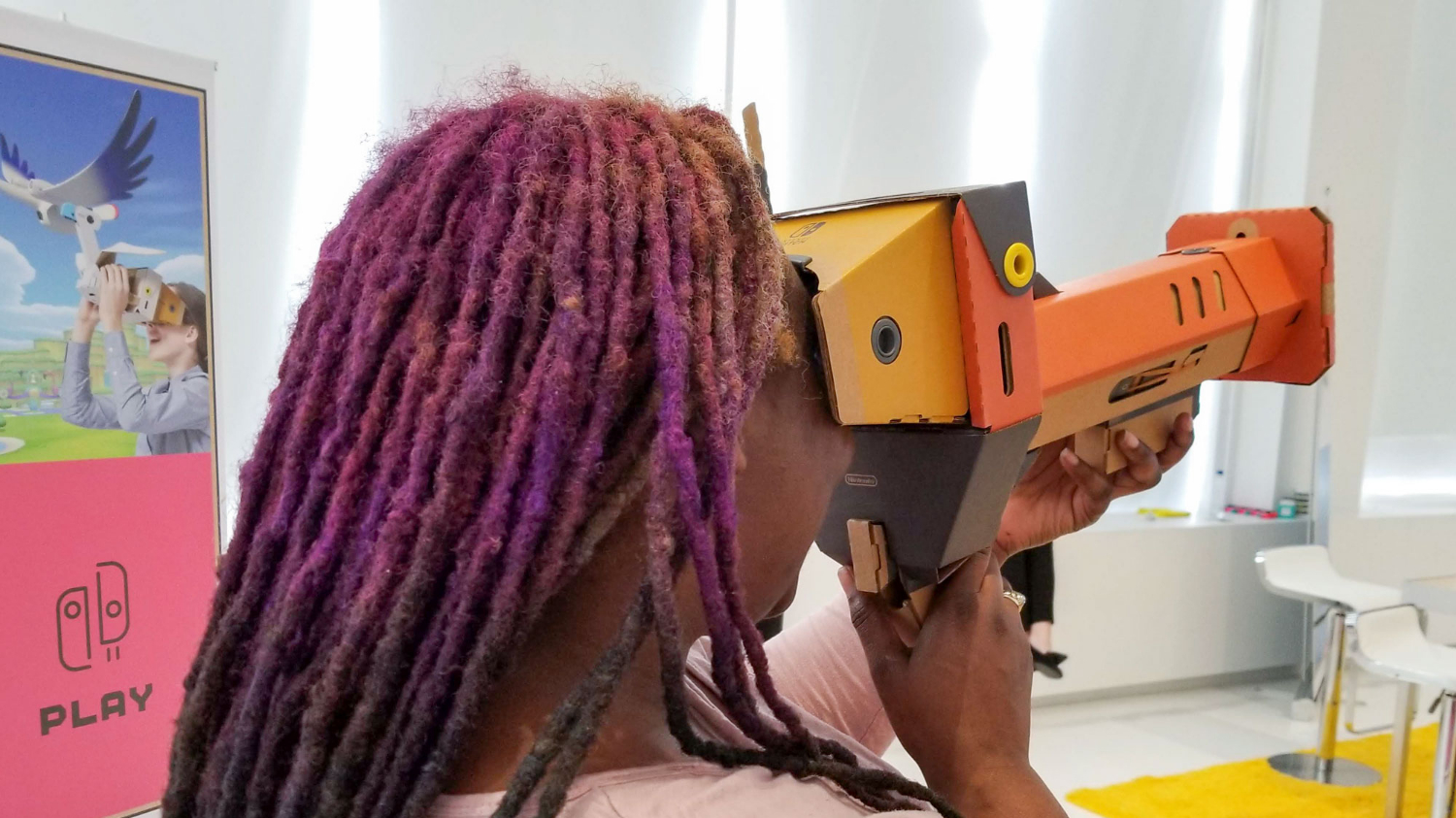
Priced at $79.99 ($39.99 for the starter kit), Nintendo is primed to take over virtual reality with a mix of fun, affordability and innovation.
If You Build It
For the uninitiated, Nintendo Labo takes the Switch and transforms the console into a variety of objects with nothing but cardboard and well-placed sticker sensors. A combination of arts and crafts and gaming, Labo has earned scads of praise for its sheer simplicity. I loved the Piano Toy-Con kit and definitely had a blast playing Mario Kart 8 with the Steering Wheel kit.
Labo VR offers more of the same. You and your child (or just you) will be building another set of carefully designed cardboard creations in Labo VR. The full VR kit offers a pair of VR Goggles with additional four Toy-Con builds including a camera, blaster, wind pedal, bird and an elephant. The cheaper Starter Kit only offers the goggles and the blaster. Nintendo is also selling two expansion sets that bundles the elephant and camera build or the bird and wind pedal.

Once you build the goggles and your chosen kit, you place the Switch into the goggles and slide them into the kit. There’s a rather large Goggle-shaped hole in each kit so you know where to place it. Enable VR mode and you’re good to go.
I didn’t have the opportunity to build any of the kits, but like the original Labo, it’s a clever mix of folding cardboard, securing rubber bands and placing stickers.
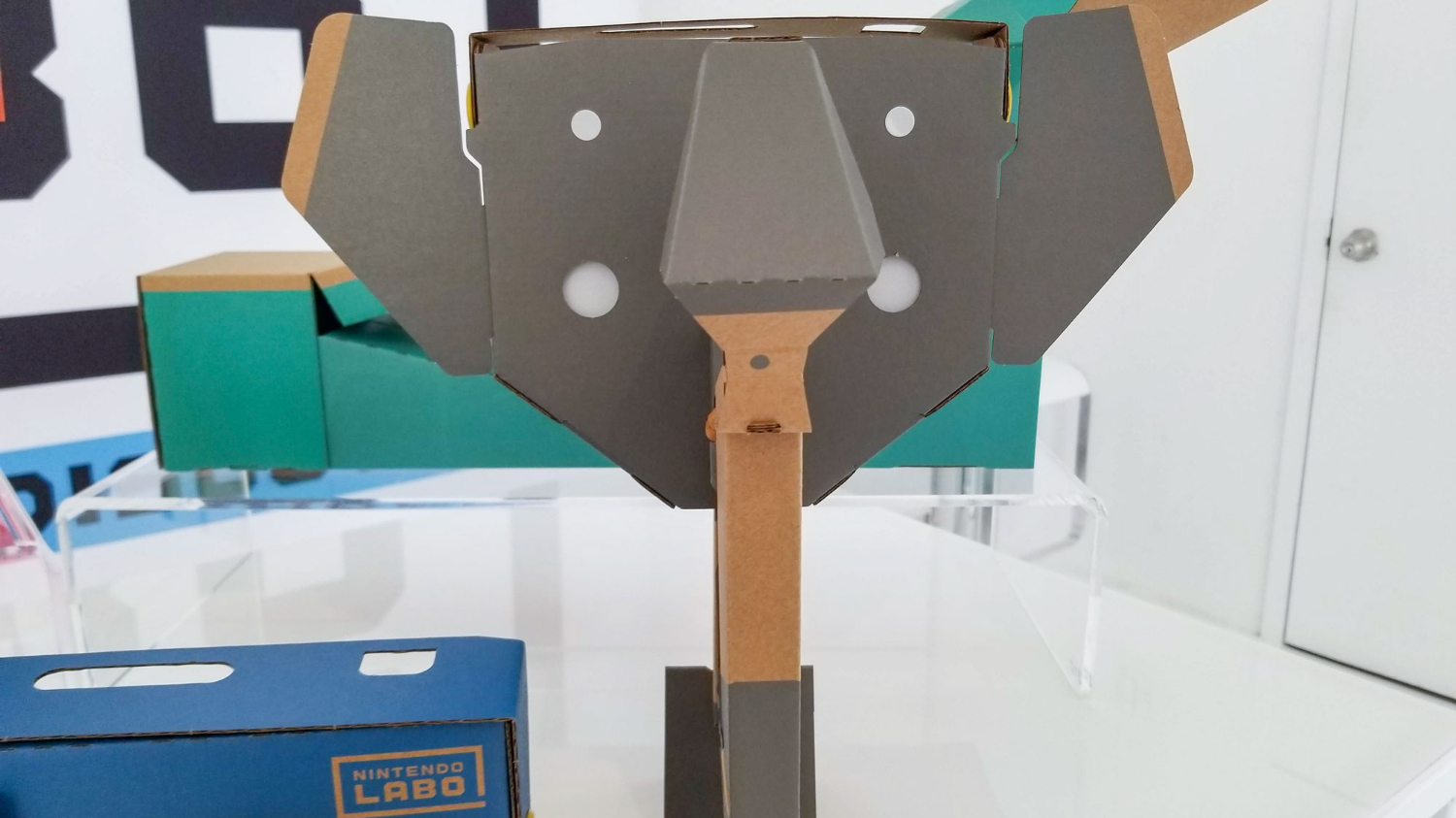
I’m always impressed with how sturdy Labo kits actually are, especially when I was pulling back the forestock on the blaster. The rubber bands gave it a nice, taunt response and it slid smoothly back into place after pulling the trigger. Speaking of the blaster, judging by all its moving parts, I think it might be one of the more difficult pieces to build. The bird might also be tricky as there are dual switches, which are needed to make the wings flap.
MORE: Best VR Headset
Specs
The verdict’s still out on the right age for kids to use virtual reality, but if you were looking to get your kid a VR headset, this would be the one. Instead of draining your smartphone's battery, the Switch is doing all the heavy lifting. However, I’m curious if splitting the display could negatively impact the handheld’s battery life. It’s something I’ll be testing come review time.

Potential battery issues aside, Nintendo delivers a pretty solid VR headset. It’s surprising really, especially when you consider the fact that Nintendo is splitting the Switch’s 1280 x 720 capacitive display into two screens. The LCD capacitive display is already at a disadvantage against competing systems like the Samsung Gear VR (2560 x 1440, Super AMOLED) and Oculus Go (2560 x 1440, LCD). Depending on what phone you pop into a Google Cardboard, the Switch is heavily outgunned.
While it’s not on a par with the more powerful system on the market, the Switch still managed to deliver solid image quality albeit with a bit of motion blur.
VR by Nintendo
So what's it like doing virtual reality on a Switch? Honestly, outside of visual fidelity, it’s not that far off from other mobile VR headsets. Depending on the Toy-Con in use, you get access to 1 or 2 games. For instance, when I was using the camera, I indulged my inner Jacques Costeau as I snapped photos in an aquatic setting.
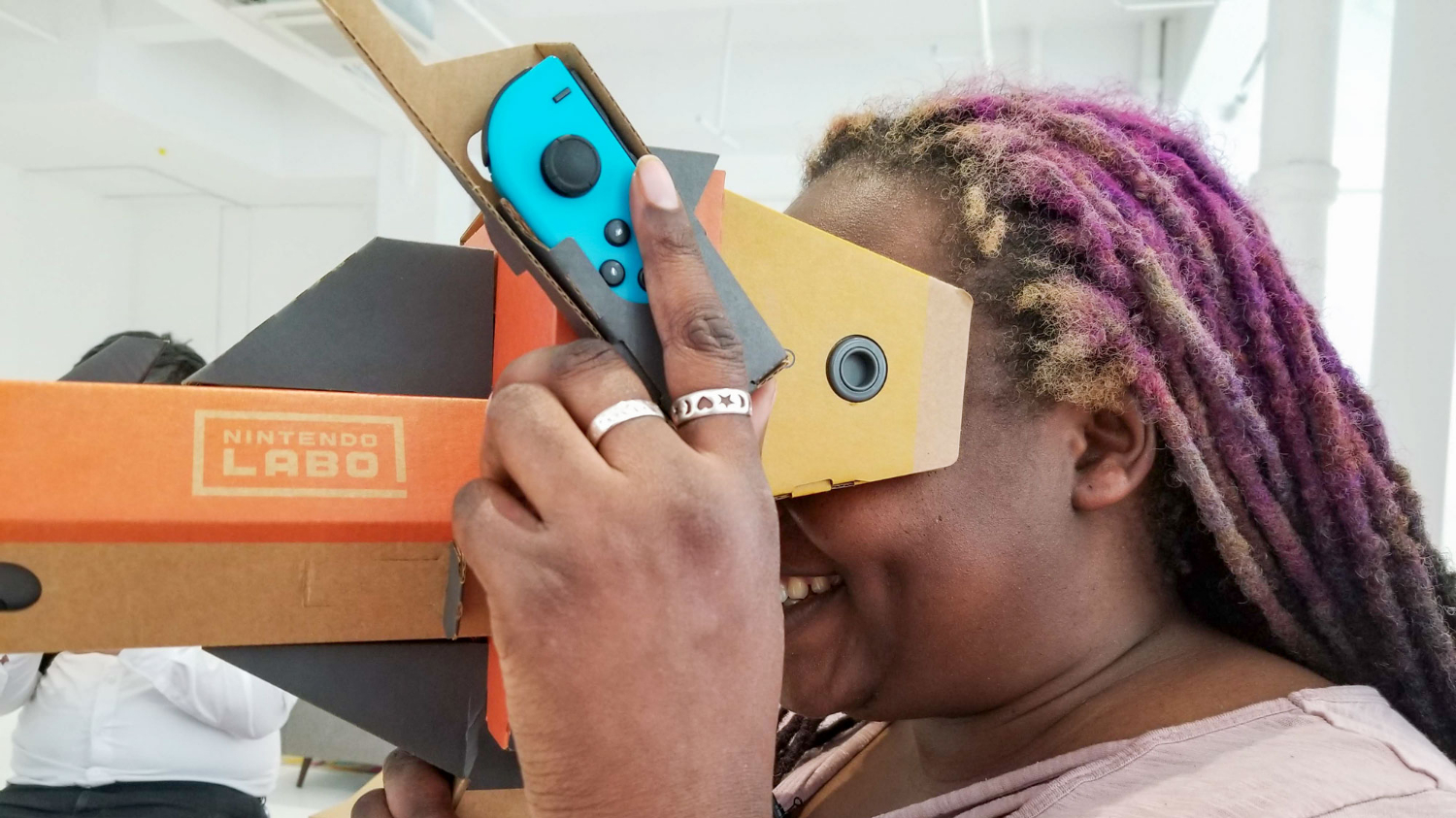
In addition to getting up close and personal with jellyfish, marlins and an occasional shark, I really enjoyed the tactility provided by the Camera Toy-Con. Mounted along the right side of the camera, one Joy-Con controller acted as the shutter while the other resided in what would be the lens. When I wanted to zoom in or out on a potential subject, I just reached out and twisted the lens and the game responded accordingly.

With the Bird Toy-Con, I used my head to steer, looking left or right while pressing on the pair of top-mounted triggers to simulate flapping my avian avatar’s wings. I was pleasantly surprised to discover that the virtual simulation matched my real-world machinations flap for flap. The Blaster Toy-Con also gave a fairly realistic performance during the alien invader game, where I was tasked with dispatching as many little pink men as possible.
The physicality of sliding back the forestock and pulling the trigger added a level of realism that a lot of VR headset OEMs are trying to impart in their own titles. All it needed was a little bit of haptic love and it’d be good to go. But then again, this is a cardboard setup, so I’ll take what I can get. Still it’s a big plug for VR peripherals outside of the traditional controllers.
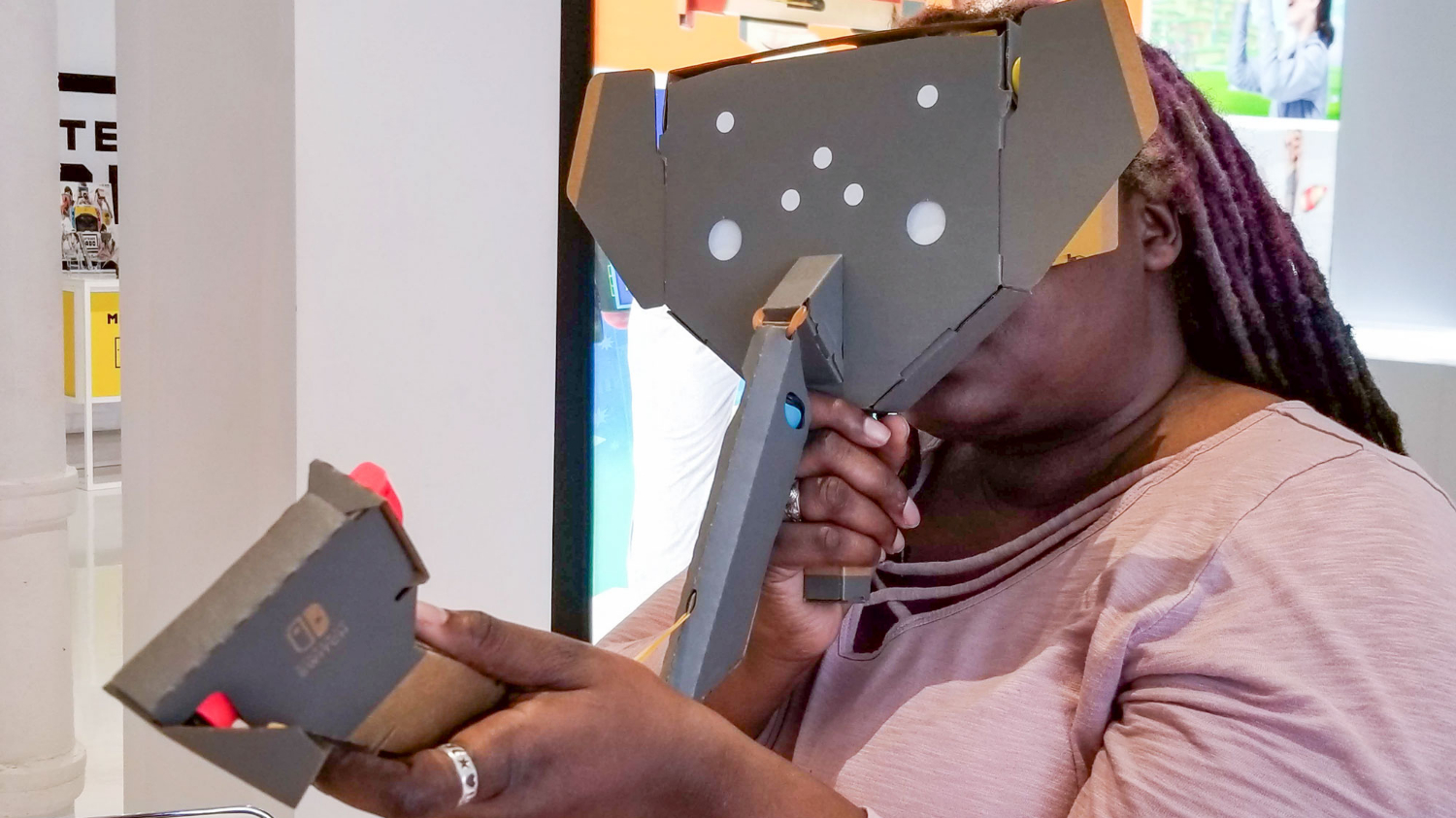
The weirdest Toy-Con by far as the elephant. I donned the silly-looking mask expecting to enter some sort of jungle game. Instead, I used the Joy-Con mounted in the trunk as a paint brush as I create 3D art in a painting game similar to Tilt Brush by Google for the HTC Vive or Quill for the Oculus Rift. Although it’s fun, it was a bit offputting, especially since the trunk wasn’t represented in the virtual world. But if you’re an artist or just want to doodle in 3D its a fun diversion.
MORE: 11 Cheap VR Headsets (Under $45) Ranked from Best to Worst
Create Your Own Games
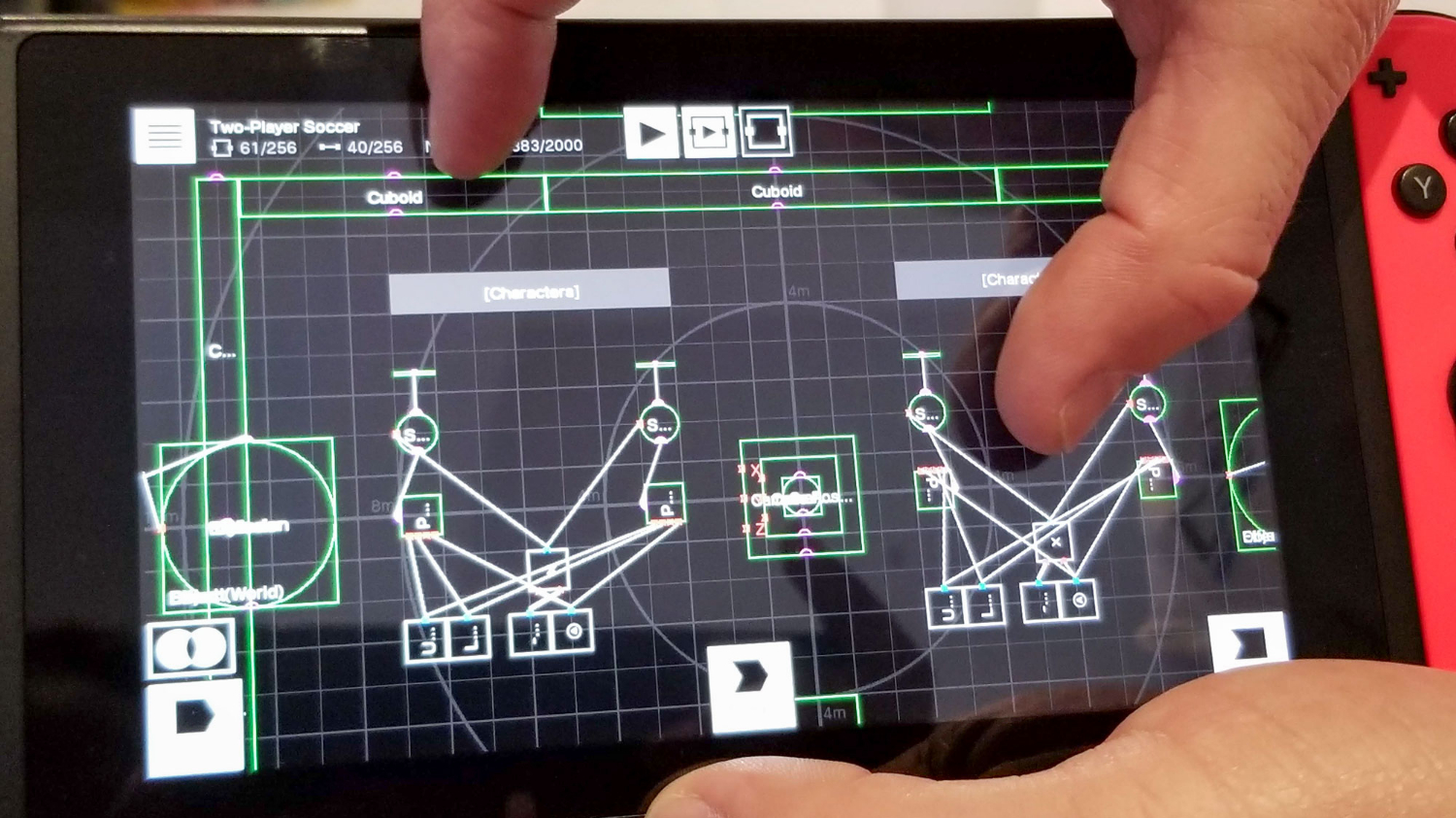
While the games and experiences provided with the Toy-Cons are fun, you’ll only want to flap around so much. When that happens, it’s going to be time to create your own games. Enter VR Plaza and VR Garage. Composed of 64 minigames, VR Plaza is set up to act as inspiration and guide to helping budding game developers. I played a simple VR maze title where I was tasked with getting from one end to the other while avoiding the dangerous red obstacles.

Once I died enough times, I switched over to Garage, which allowed me to see how the game ticked complete with the programmed moves, actions and level design. It looked pretty complicated to me at first glance, but since this is a Nintendo game, I’m pretty sure a child can pretty easily cobble something cool together. Not sure about a thirty-something tech and games journalist, but a child definitely could. Best of all, if VR’s not your bag, you can create games in 2D. I got a taste of this during a soccer minigame that was more akin to foosball than soccer as I went head-to-head against a Nintendo rep.
Outlook
Way back in 1994, Nintendo boldly stepped into the virtual reality realm with the Virtual Boy. It failed, bogged down by high prices, uncomfortable use and a poor marketing campaign. Don’t expect it to happen again. Taking a page out of Apple’s handbook, Nintendo played the long game with Labo VR. Instead of coming out the gate with a VR headset like everyone else, it bided its time, watched its competitors succeed and fall flat before it struck.
The end result is a VR experience that does a great job of combining virtual experience with real-world tactility. Just building the Toy-Cons can be a fun experience and the virtual experiences are legitimately fun. However, like previous Labo Kits, the entertainment value is short unless you’re willing to futz around with VR Garage and make your own fun.
But the fact that Nintendo has sold 8.7 million Switches since last year shouldn’t be overlooked. The company has laid the groundwork for bringing virtual reality to the mainstream consumer in a way its competitors have failed, just by rectifying the mistakes of the past.
Credit: Tom's Guide
Sign up to get the BEST of Tom's Guide direct to your inbox.
Get instant access to breaking news, the hottest reviews, great deals and helpful tips.
Sherri L. Smith has been cranking out product reviews for Laptopmag.com since 2011. In that time, she's reviewed more than her share of laptops, tablets, smartphones and everything in between. The resident gamer and audio junkie, Sherri was previously a managing editor for Black Web 2.0 and contributed to BET.Com and Popgadget.

